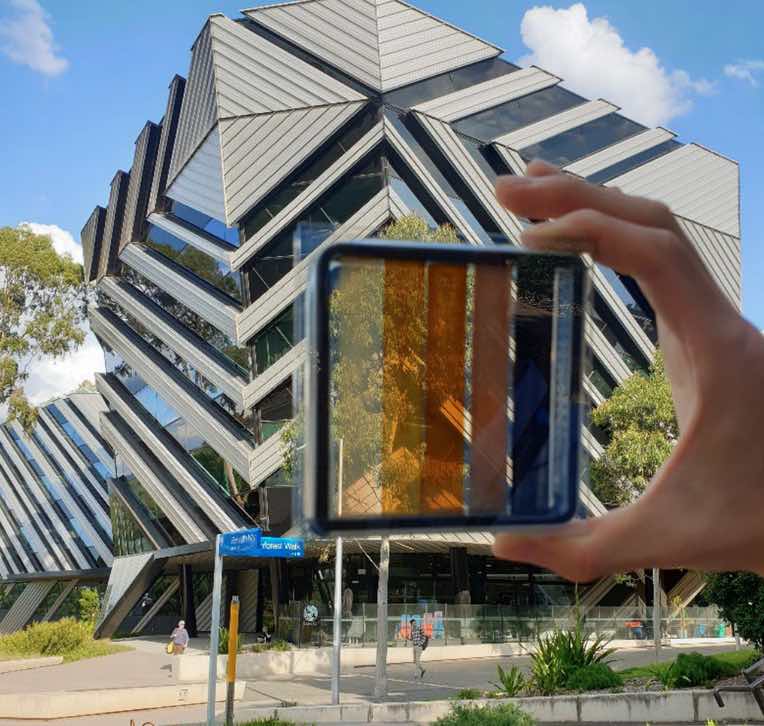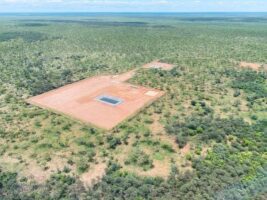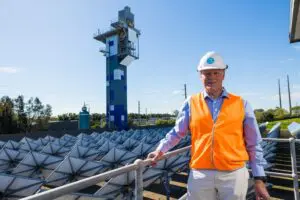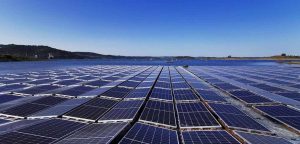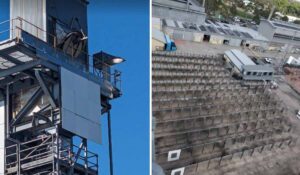Australian researchers have found a way to boost the energy efficiency and longevity of solar integrated glass, while also allowing more natural light to pass through it, marking a two-pronged breakthrough for the technology.
The research team, based at Victoria’s Monash University and CSIRO, say they have demonstrated power conversion efficiencies of 15.5% and 4.1% for different types of prototype semi-transparent solar cells, with visible transmittance of 20.7% and 52.4% respectively.
The achievement by the researchers, who are members of the ARC Centre of Excellence in Exciton Science, builds on achievements two years ago, when the same team created a solar window prototype that let through 10% of visible light and achieved 17% power conversion efficiency.
While the upper power conversion efficiency achieved in the newer prototype is slightly lower than was achieved back in 2020 – 15.5% compared to 17% – the pass-through of visible light is “significantly greater,” the team says, increasing their viability for real-world applications.
Also significant is the “excellent long-term stability” the caesium and formamidinium perovskite solar cells demonstrated when tested for continuous illumination and heating, to mimic the conditions the solar windows would experience in real-world use.
According to a report in the journal Advanced Science, the prototypes with that particular perovskite composition were shown to maintain 85% of its initial power conversion efficiency after 1000 hours under continuous illumination.
In light of the expected lifetime for windows and buildings being between 25 and 40 years, the team argues this finding is an important step forward toward realising commercialised, next-generation solar window technologies.
“This work provides a major step forward towards realising high efficiency and stable perovskite devices that can be deployed as solar windows to fulfil what is a largely untapped market opportunity,” said project leader, Professor Jacek Jasieniak from the Department of Materials Science & Engineering at Monash.
Jasieniak also noted the achievement on Twitter, giving thanks to the Australian Renewable Energy Agency, which was behind most of the funding for the solar glass research.
We have made another major forward towards achieving high efficiency and stable solar windows! Great collaborative effort between our team here @MonashMSE and colleagues at @csiro. Thanks @ARENA_aus and @excitonscience. https://t.co/TQpMl5zn2p
— Jacek Jasieniak (@JacekJasieniak) May 26, 2022
The use of solar glass in real life applications is still fairly rare, globally, but is increasingly being considered by developers seeking to reduce the carbon footprint of buildings, as well as in the agricultural sector, where it is hoped it can be used to help power glasshouse growing operations.
As Professor Jasieniak noted, if costs can be reduced and efficiencies improved, then the potential markets for transparent solar glass would be huge.
But currently much commercially available integrated solar glass technology remains prohibitively expensive to install. According to market research company PV InfoLink, by the end of 2020, quotes for PV glass rose to reach the price of $US6.64/㎡, with some small-scale suppliers even quoting prices of $US7.72/㎡.
In Australia, ASX-listed ClearVue Technologies last year completed construction of a “world-first” clear solar glass greenhouse in Western Australia with the aim of demonstrating both its integrated solar glass product and its potential to advance cutting edge agricultural research.
As RenewEconomy reported, the ClearVue greenhouse’s area of 3000m² was expected to generate roughly 0.25MWh of solar energy a day, which is the equivalent to installing a 60kW solar farm, or enough to power around 12 average households.
ClearVue’s technology works by using nano technology to internally diffuse and reflect elements of sunlight towards the edges of an integrated glass unit’s frame, where it is collected by silicon based PV modules. Current efficiency of the IGU is 3.3%, measured at standard test conditions.

